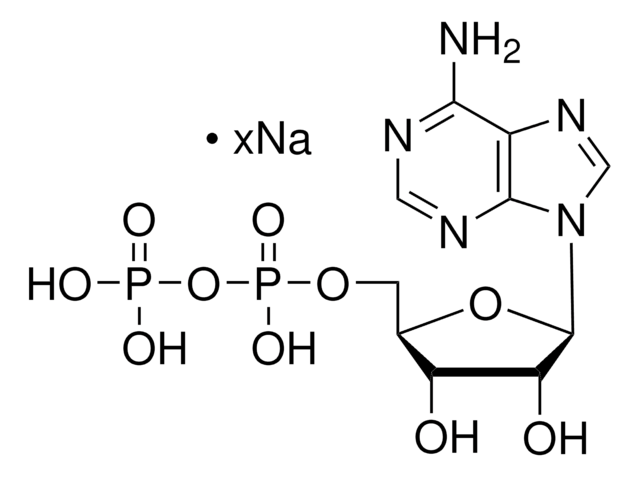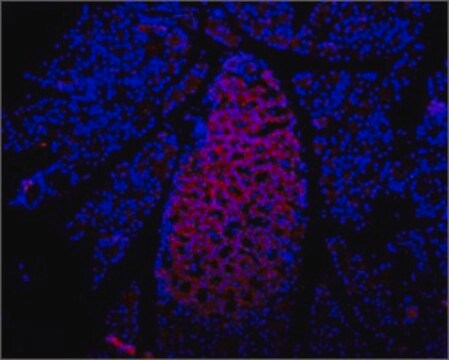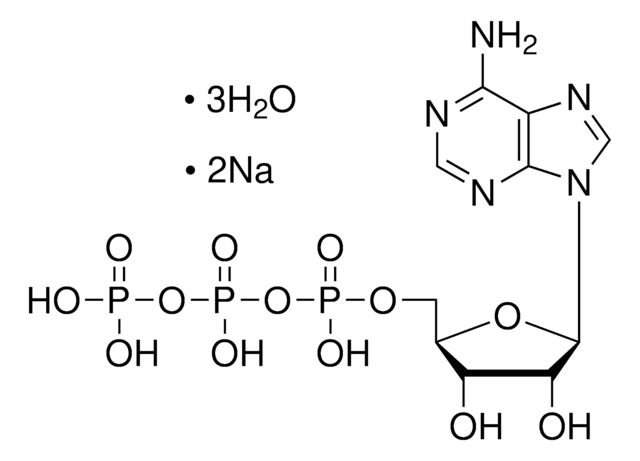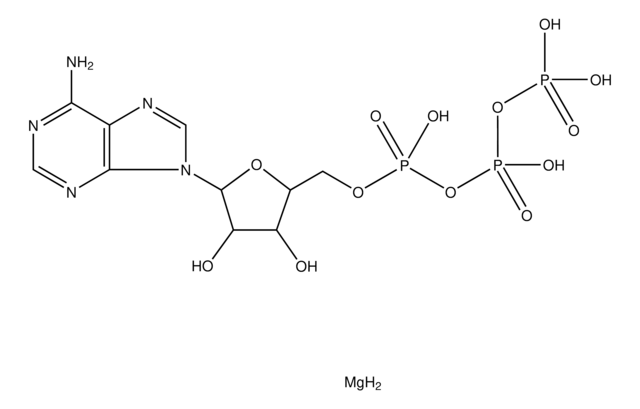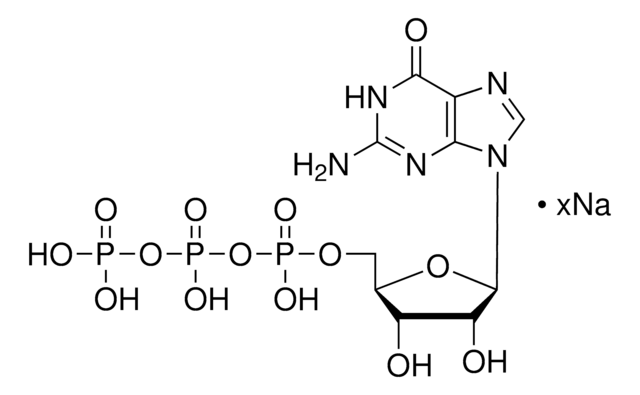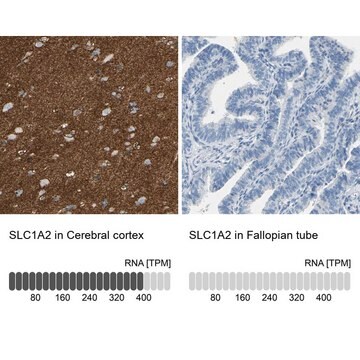Kluczowe dokumenty
P8232
Anti-P2X7 Purinergic Receptor antibody produced in rabbit
affinity isolated antibody, lyophilized powder
Synonim(y):
Anti-P2X₇ Antibody, P2X₇ Receptor Detection, Rabbit Anti-P2X₇
About This Item
Polecane produkty
pochodzenie biologiczne
rabbit
Poziom jakości
białko sprzężone
unconjugated
forma przeciwciała
affinity isolated antibody
rodzaj przeciwciała
primary antibodies
klon
polyclonal
Formularz
lyophilized powder
reaktywność gatunkowa
human, mouse, rat
metody
immunohistochemistry: suitable
western blot: 1:200-1:1,000
numer dostępu UniProt
Warunki transportu
dry ice
temp. przechowywania
−20°C
docelowa modyfikacja potranslacyjna
unmodified
informacje o genach
human ... P2RX7(5027)
mouse ... P2rx7(18439)
rat ... P2rx7(29665)
Opis ogólny
Immunogen
Zastosowanie
- immunoprecipitation
- immunofluorescence and confocal microscopy
- western blotting
Działania biochem./fizjol.
Postać fizyczna
Przechowywanie i stabilność
Inne uwagi
Oświadczenie o zrzeczeniu się odpowiedzialności
Nie możesz znaleźć właściwego produktu?
Wypróbuj nasz Narzędzie selektora produktów.
Kod klasy składowania
13 - Non Combustible Solids
Klasa zagrożenia wodnego (WGK)
WGK 2
Temperatura zapłonu (°F)
Not applicable
Temperatura zapłonu (°C)
Not applicable
Wybierz jedną z najnowszych wersji:
Masz już ten produkt?
Dokumenty związane z niedawno zakupionymi produktami zostały zamieszczone w Bibliotece dokumentów.
Klienci oglądali również te produkty
Nasz zespół naukowców ma doświadczenie we wszystkich obszarach badań, w tym w naukach przyrodniczych, materiałoznawstwie, syntezie chemicznej, chromatografii, analityce i wielu innych dziedzinach.
Skontaktuj się z zespołem ds. pomocy technicznej
